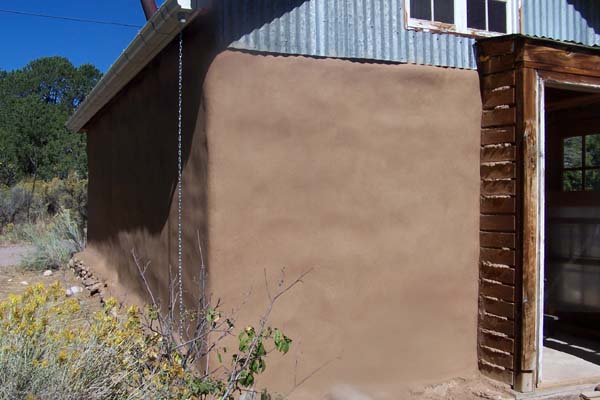A view of the outside new earthen plaster casita entry. The rough unfinished walls were filled in by us with a cob like earthen coat first, then finished with a more fine coat. We were able to use the clay based soil found just near the main house.
This 300 sq. ft. adobe cottage was built around the late 1970’s by the owner of this house. As often was the case in those days, before more advanced methods of adobe construction became the norm, structures were not built as solidly and missing a few key elements of natural building.
In this case it appeared as though the roof had not been put up immediately and the walls seemed to be warn down inside and out due to exposure to the elements. Also, this small building does not have a proper over hang, that required for earthen building being 2 feet- minimum. The owner does not like large overhangs and knows that our plaster, especially being a non-water proofed earthen plaster, will deteriorate over time and is fine with that outcome.
Given he did request an earthen plaster for the exterior walls (which we never apply, again due to it’s non-water proofed attributes), we opted to create the strongest mix we could conceive of and set about even trying a simple waterproofing exterior wash on coat. We are not certain how long it will hold, but given the circumstances thought it worth a try.
One thing we do often note and are amazed by – that is how how strong and solid both adobe bricks and other earthen building methods are, such as cob. In older structures like this one we have worked on in which they get hammered by the elements for a variety of reasons, they often hold up remarkably well.


